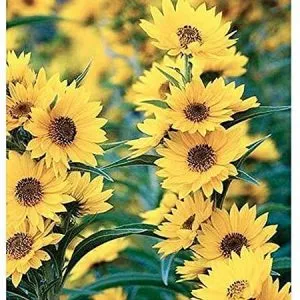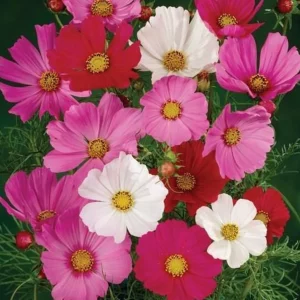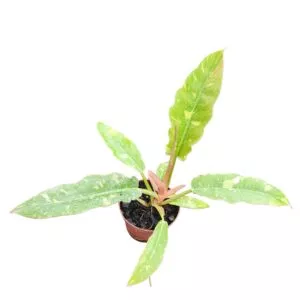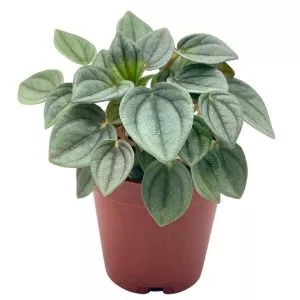No products in the cart.
Do you love eating a fig? If you do, you know how delicious and expensive they can be. For this reason, we will look at the Brown Turkey Fig trees that produce medium-sized sweet fruit for you to grow in your garden or a container.
Plant Name: Ficus carica Brown Turkey
Other Names: Brown Turkey Fig
Plant Type: Deciduous Trees
Native Areas: Cultivar
Light Requirement: Full Sun
Watering: Average
Fertilizer: Slow Release
Toxicity: The leaf and root sap are toxic
Temperature: Tolerates temperatures down to 10°F
Propagation: Self-Pollinating and Cuttings
Growth: Mature height, 30 feet tall
Soil Type: Organic Well-Drained Soil
USDA Hardiness Zones: 8-10
More About Brown Turkey Fig Trees
Regarding the fig tree, you can find over 200 cultivars available. But one fig tree considered the best to grow is the Brown Turkey Fig. Some other common names are negro largo, San Piero, and aubique noire.
The Brown Turkey Fig trees bear two crops; the first is the breba crop in spring with new growth from the last growing seasons’ change. Then you have the second crop in the fall on the new growth called the main crop.
The fresh figs have rusted red to purple skin with pale green shoulders. The fruit cracks open when ripe to expose the flesh at the end of the stem. The fruit flesh has a rose color with edible seeds.
The edible seeds are amber-toned and hollow unless it is pollinated. The pollinated seeds have a nutty flavor when the figs are dried. Hence, you can expect your fig tree to bear fruit in early spring through winter.
Still, in the winter months, when the temperature drops, you find a change in the fruit texture, and not suitable for culinary use. The reason is that the inside of the fig becomes dry and woody as the seeds separate from the flesh.
The Brown Turkey Fig tree belongs to the Moraceae family, and it is a deciduous tree that can also grow as a shrub. Mature trees can reach heights 10 to 30 feet fast with a broad crown and deeply lobed leaves.
Brown Turkey Fig Care Guide
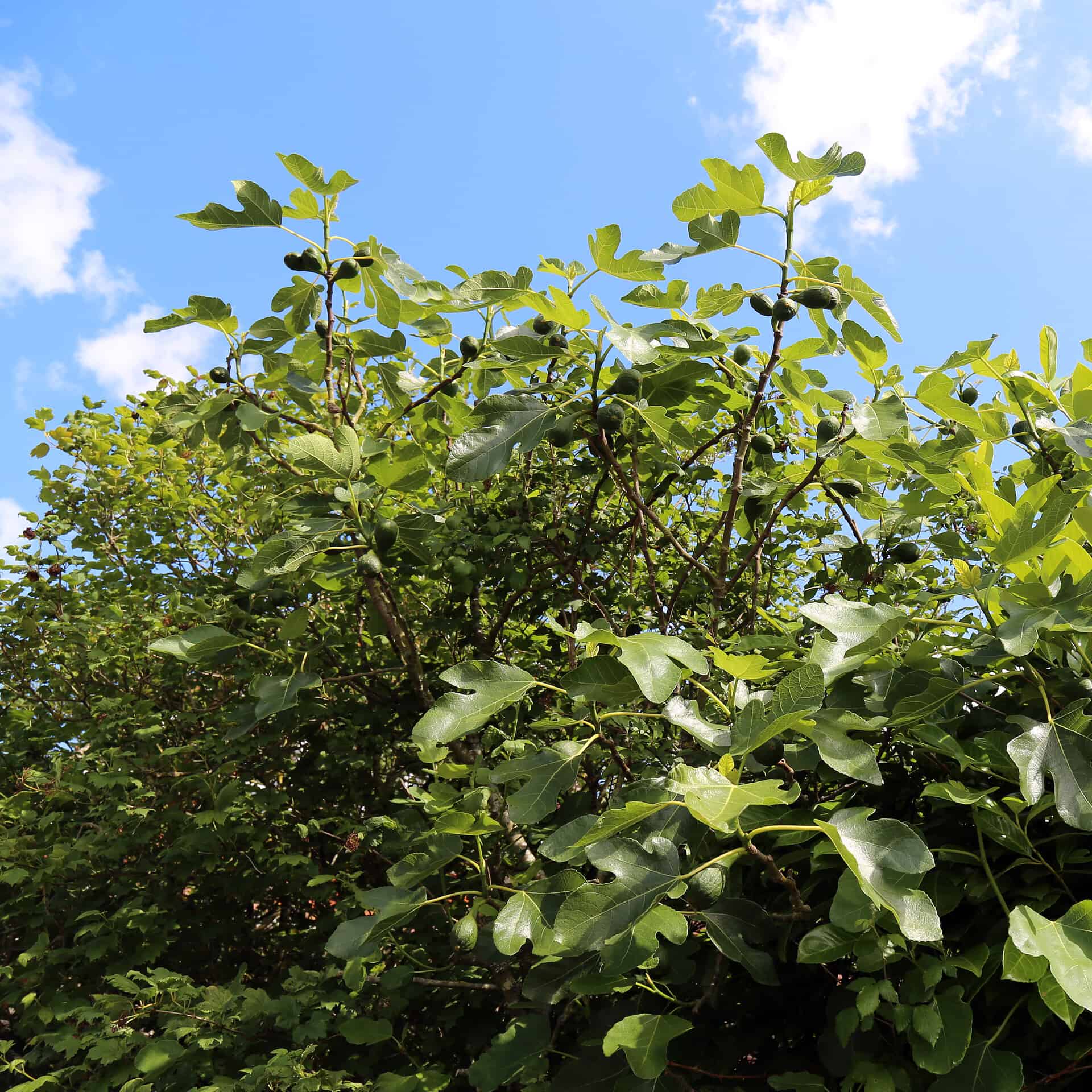
Investing in a Brown Turkey Fig tree helps buy them from reputable providers to prevent the spread of nematodes. The best time to plant your fig trees is in the dormant stage of late fall or early spring.
Recommended Potting Mixture
The Brown Turkey Fig tree can grow in different soil conditions, from organic loamy to heavy clay soils. The important thing is it needs well-drained soil and should not be acidic.
The Brown Turkey Figs cannot tolerate a high acid, and the pH needs to be between 6.0 and 6.5. The fruit trees can handle some salinity and can grow at coastal locations.
Lighting Needs For Your Multi-Branched Shrub
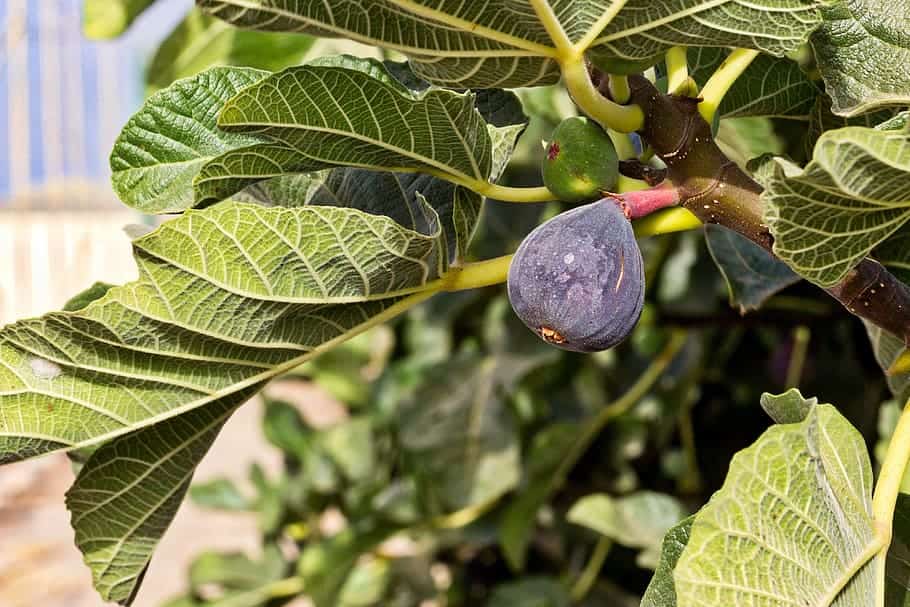
To produce those delicious fruits, the Brown Turkey Fig must stand in full sun to receive up to eight hours of direct sunlight.
If your fig tree stands in more shade, it produces less fruit. Still, if you live in regions where the summer can get very hot, provide your tree with some partial shade in the afternoon.
Watering Needs For Ficus Carica Brown Turkey Fig Trees
The Brown Turkey Fig is drought tolerant, and mature trees do not need much water. But most fig trees prefer having moist soil when there is fruit on the trees.
When there is not enough water, it affects the fruit’s taste and size. To help retain moisture around the shallow roots, add some mulch using organic matter around the base of the shrub.
Temperature and Humidity
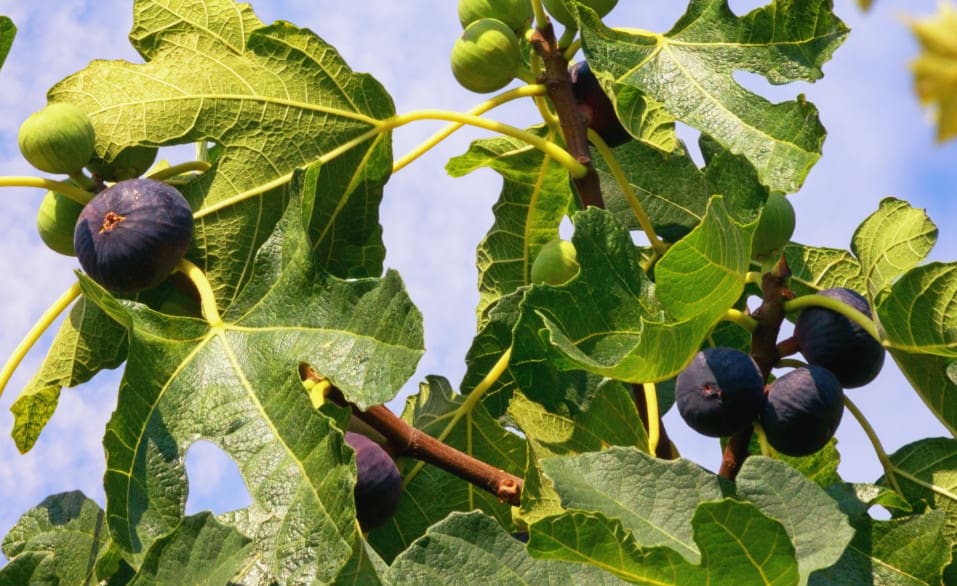
The Ficus carica is not a hardy tree that will tolerate temperatures below 10°F. Therefore, the Brown Turkey Figs need a drier climate with light spring rains. Hence it is heat tolerant.
When a lot of rain is present during the fruiting period, the figs will split and spoil. At the same time, semi-arid climates are ideal if irrigation is available.
Fertilizing Brown Turkey Fig Trees
Feeding is vital to producing healthy sweet fruit from the Brown Turkey Fig trees. Feeding must be done twice a year when you notice the green leaves turning yellow or see pale leaves.
The best time to fertilize the Brown Turkey Fig tree is in the dormant season—then feed the trees in late summer while the fruit ripens. We recommend using an all-purpose, slow-release granular fertilizer like an 8-8-8 one.
PruningTips For Brown Turkey Figs
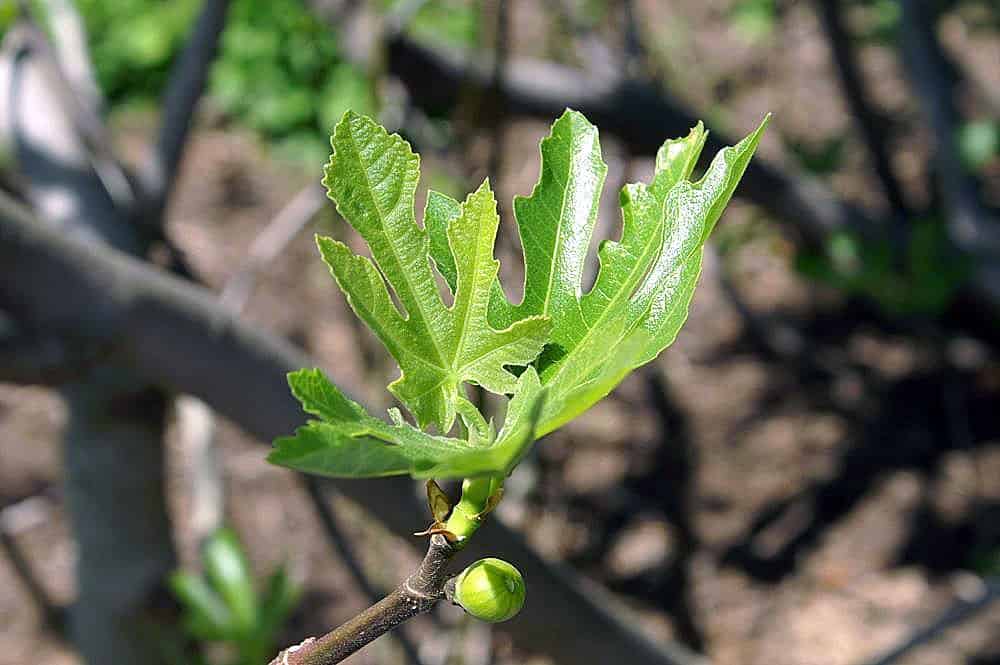
Whether you have a bush or fig tree to help it thrive, it helps to do light pruning.
In the first year after planting your fig tree, please give it a light pruning before placing it in the ground. We recommend cutting back 50% of the branches to form a single-trunk tree. Pruning will also help the tree establish a robust root system.
When the first winter arrives, you can prune your shrub, which needs to become an annual affair. Doing this helps your tree to develop new branches sprouting in spring.
You can also remove the crowded branches and decide what branches will bear fruit.
Also, remove any suckers that are small leafy growth appearing at ground level as they will grow into branches.
Remove dead or diseased wood in late fall and winter.
Overwintering Figs
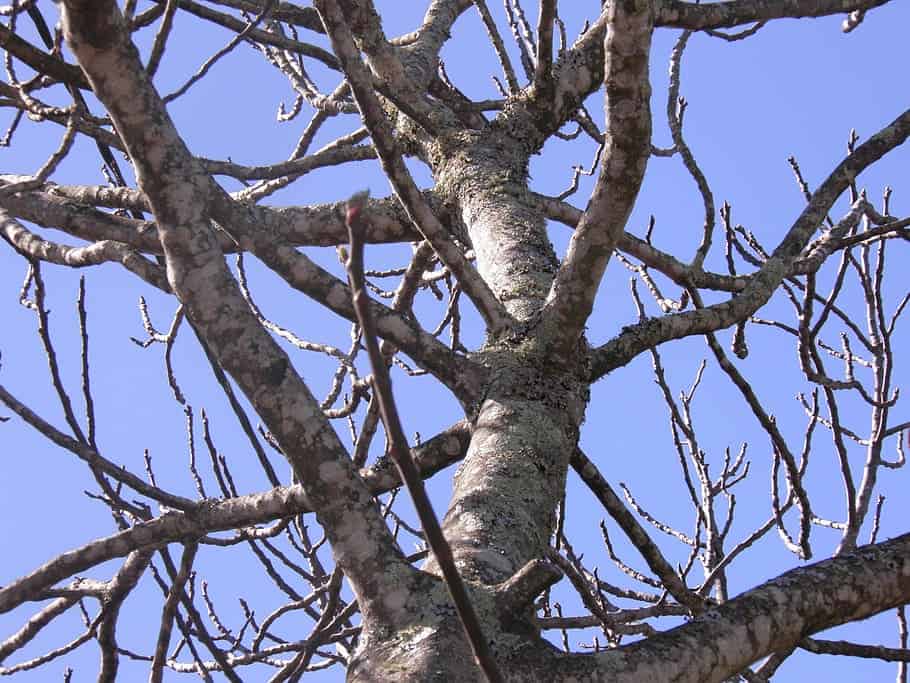
Your Brown Turkey Fig becomes dormant during winter and will not survive freezing temperatures.
Yet, you can cover your shrubs with burlap in the fall or early winter to prevent them from dying back too much.
Another prevention method is to fasten the branches using rope and pull them together before wrapping the stem with burlap.
-
Free Shipping$8.36 – $8.98Sold By: CZ Grain
In stock
Giant Maximillian Sunflower Seeds – Perennial Sunflower – Made in USA
Rated 4.60 out of 5 based on 156 customer ratings00Sold By: CZ Grain -
Free Shipping$7.99 – $14.29Sold By: CZ Grain
In stock
Cosmos Flower Seeds, Sensation Mix Color Seeds – Non-GMO Seeds – Ships from Iowa, USA
Rated 4.60 out of 5 based on 156 customer ratings00Sold By: CZ Grain -
$40.00Sold By: PotHedz Plants
In stock
Philodendron Ring of Fire
Rated 4.96 out of 5 based on 106 customer ratings00Sold By: PotHedz Plants -
Free Shipping$18.00Sold By: Bay Urban Habitat
In stock
African flag aka Chasmanthe bicolor flower bulbs
Sold By: Bay Urban Habitat
Propagating Brown Turkey Fig
You can start your fig tree with cuttings and done in three different ways.
LAYERING
Depending on the winter temperatures, you can do ground layering.
Take a low-growing branch measuring up to 8 inches and bury it in the ground.
Leave that portion to develop a root system before removing it from the parent plant.
ROOTING CUTTINGS OUTDOORS
In late winter, after frost passes, cut from a small branch about three years old. Choose a branch of about ¾ inches thick and 12 inches long.
Make a flat bottom cut with a tip cut at a slant. Seal the slanted end with a sealant and use the rooting hormone of the flat end.
Gather a few cuttings and place the flat end into deep holes about six inches wide and a foot apart.
Water well and wait for the cuttings to grow to 48 inches to transplant the following winter season.
ROOTING INDOORS
Follow the same steps above for taking your cuttings. Then line a pot with some newspaper and add a standard potting mixture. Place up to four cuttings you treated in the pot and fill them with soil.
Water the seedling well and place a two-liter bottle over it with the bottom removed. Keep these indoor plants warm in bright indirect light and water when the soil is dry. After you see new growth, you can remove the bottle.
As more growth appears, you can plant it in a larger pot or in the garden.
Brown Turkey Fig Ficus Tree Varieties
Different fig trees have been cultivated for centuries to thrive in warm, arid conditions. Brown Turkey, Celeste, and Ischia are hardy varieties for cooler regions. But there are others as well seen here:
Caprifig
The shrub has male and female flowers, only needing visits from wasps. Yet in the USA, these wasps are not present to produce fruit, which is inedible. While not useful for their fruit, they make excellent pollinators for other fig trees.
Smyrna Fig
To develop fruit, you will need cross-pollination from the Caprifig.
Brown Turkey Fig Common Diseases and Pests
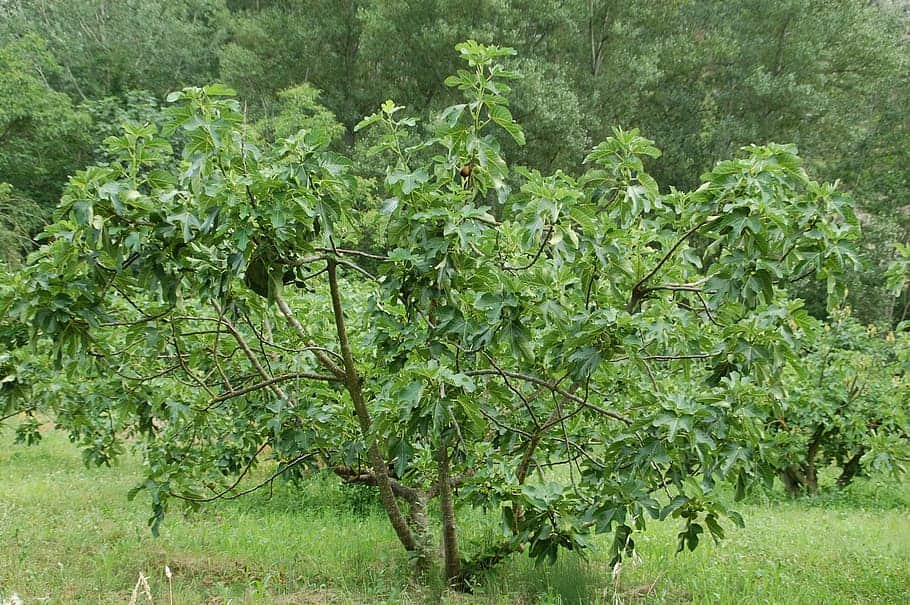
Like most fig trees, the Brown Turkey Fig also gets its fair share of pests and diseases. Some diseases are as follows:
Aphids, mealybugs, spider mites
Anthracnose is a fungal disease causing black to brown spots on the foliage and leads to yellow leaves wilting. You can treat it with a fungicide.
Fig rust starts with small orange spots, and the foliage dries. You can control it with a copper-based fungicide.
Fig mosaic is spread by mites and develops with blotches on the leaves. The best way is to treat these pests naturally using a horticultural oil like Neem oil.
These are a few diseases that can cause problems, but pests are the main reason why these fungal to viral infections start.
Several species like fig scales, beetles, nematodes, and vinegar flies are causing havoc on these shrubs.
You can use insecticidal soap for some insects, but you may need to find something more effective for others.
Frequently Asked Questions
The most expensive fig to eat fresh is the white Baca fig from La Luz, near Alamogordo.
The lifespan of fig trees is 50 to 75 years when grown in the right environment and conditions.
When you eat dried figs, it contains more sugar, dietary fiber, minerals, calories, and sugar. Still, eating fresh figs provides more vitamin C and A to beta-carotene.
If you want to grow healthy figs in the garden, look no further than Plantly. We have a selection of fig trees you can browse through to plant in the yard.
Whether you want to buy, sell, or simply reach out to other plant enthusiasts, Plantly is the right place to be!
-
$10.00Sold By: Smoot's Farm
Only 1 left in stock
Echeveria Topsy Turvy Runyonii Succulent 4″ Pot Live Plant
Rated 4.89 out of 5 based on 27 customer ratings00Sold By: Smoot's Farm -
Free Shipping$24.95 – $29.95Sold By: A&K Plants
In stock
Lively Philodendron Neon | Easy-care Epiphytic Vine | Vibrant Foliage | 4-inch pot
Only 4 available and it’s in 1 people’s basketRated 4.95 out of 5 based on 66 customer ratings00Sold By: A&K Plants -
$30.00Sold By: Southern Oak Exotics
In stock
Chlorospatha Species Ex Ecuador
Sold By: Southern Oak Exotics -
$6.99Sold By: BubbleBlooms
In stock
Green Ripple Peperomia Frost
Only 97 available and it’s in 1 people’s basketRated 4.81 out of 5 based on 279 customer ratings00Sold By: BubbleBlooms
